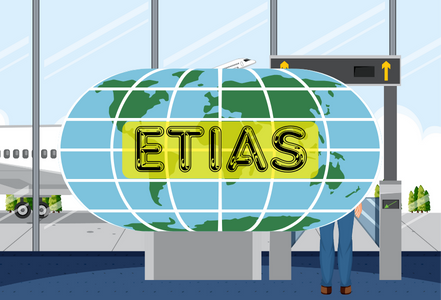If you’ve ever dreamed of spending months (or even years) in Europe without the headache of applying for a long-term visa, there’s good news — it’s totally possible. With a little planning and a travel strategy known as the Schengen Shuffle, you can legally stay in Europe for extended periods, bouncing between countries and making the most of your passport privileges.
Here’s how it works…

What Is the Schengen Zone?
The Schengen Zone is a group of 29 European countries that have removed internal borders, meaning you can travel between them as freely as you would between U.S. states.
For U.S. citizens, the key rule is the 90/180 Rule:
- You can stay up to 90 days in any 180-day period inside the Schengen Zone without a visa.
- Your days are counted across the entire zone — not per country. So if you spend 60 days in France and then head to Italy for 30 days, you’ve used your full allowance.
That freedom is great… until the clock runs out.
Countries Outside the Schengen Zone
Here’s where the magic happens: not all European countries are part of the Schengen Zone.
Some are completely outside the system, and they often have generous entry rules for U.S. passport holders.
Examples include:
- United Kingdom – 180 days visa-free
- Ireland – 90 days visa-free
- Albania – up to 1 year visa-free
- Georgia (near Europe)– allows extended stays up to 1 year visa-free
By mixing Schengen and non-Schengen time, you can keep traveling without overstaying.
How the Schengen Shuffle Works
Think of it as a dance between zones:
- Spend up to 90 days in the Schengen Zone.
- Leave for a non-Schengen country for the next 90 days (or longer if allowed).
- When your original 180-day window resets, head back into the Schengen Zone for another round.
Example itinerary:
- January–March: France, Spain, Italy (Schengen)
- April–June: Albania or Ireland (non-Schengen)
- July–September: Back to Schengen — maybe Portugal and Germany this time
The key is tracking your days carefully. Tools like a Schengen calendar tracker make it easy — I’ve linked one below that you can use for free (please buy the creator a coffee if you’ve found it helpful).
Important Changes Coming Soon
Europe is tightening entry procedures for short-term visitors:
- ETIAS (European Travel Information and Authorization System) – Coming soon, current estimate is the last quarter of 2026. This isn’t a visa but a required online pre-registration for travelers from visa-exempt countries.
- UK ETA (Electronic Travel Authorization) – Similar pre-travel approval required for the United Kingdom.
These will add a step to your planning, but won’t change the length of stay rules.
Best Non-Schengen Countries to Add to Your Rotation
Here are some traveler-friendly destinations that make the Schengen Shuffle work like a charm:

- Albania – 365 days visa-free
- Georgia – 365 days visa-free
- Montenegro – 90 days visa-free
- Turkey – 90 days in 180 (e-visa required for U.S. citizens)
- Ireland – 90 days visa-free
- United Kingdom – 180 days visa-free
These places aren’t just “gaps” in your Schengen timeline — they’re incredible destinations worth exploring in their own right.
Final Thoughts: Living the Slow Travel Dream
With some forethought and a bit of calendar math, you can turn your European travels into a long-term adventure without applying for residency or work visas. The Schengen Shuffle works beautifully for slow travelers, digital nomads, and anyone testing the waters before moving abroad.
Free Resources:
- 🗓️ Schengen Shuffle Calendar Tracker – 90/180 Day Calendar
- 🌍 List of Non-Schengen Countries for U.S. Travelers – LINK TO WIKI?
- 🔗 ETIAS Info – Official EU Site
- 🔗 UK ETA Info – Official UK Government Site

Read more about the Schengen Zone here







